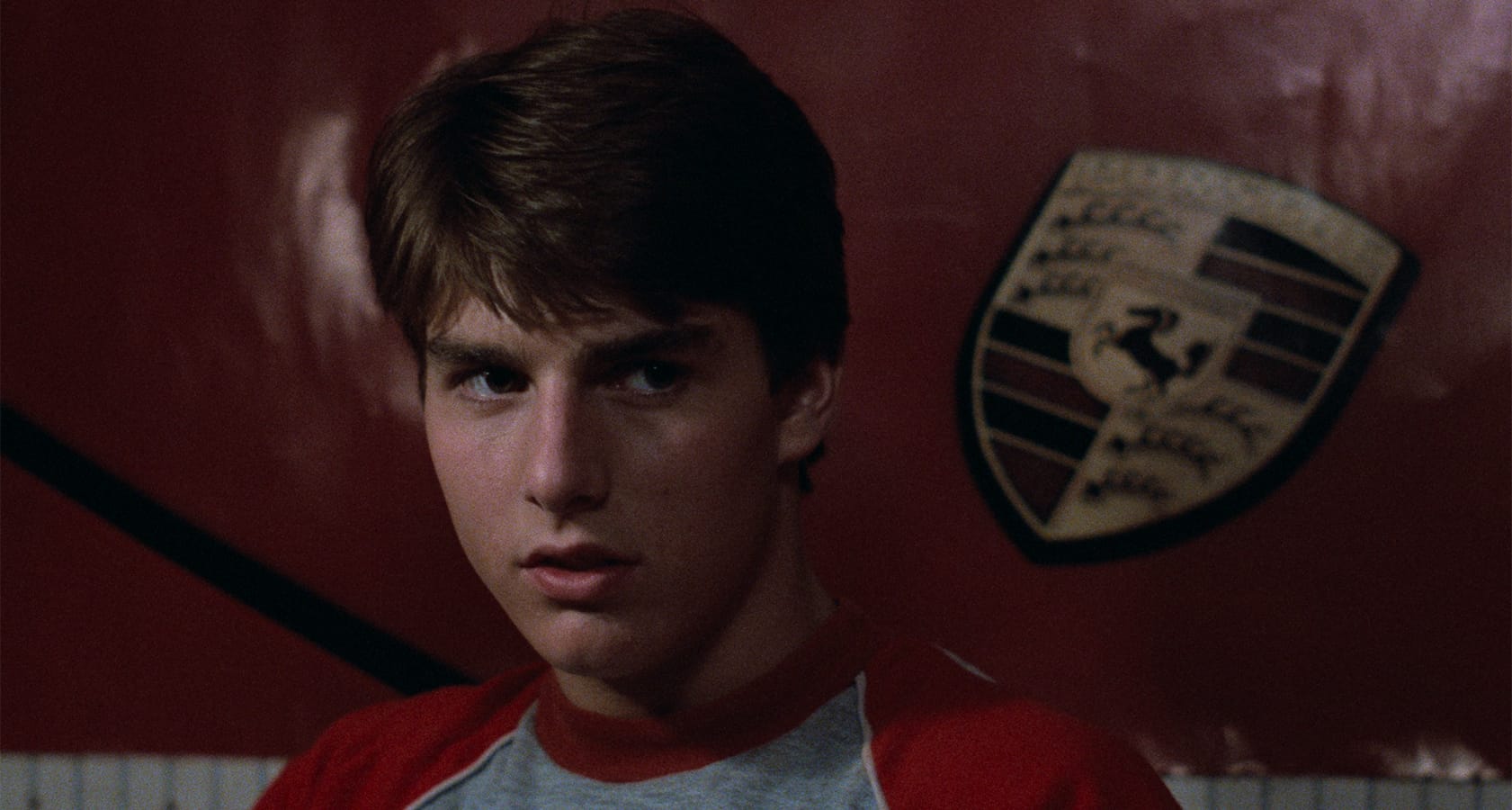SPOILERS FOR ALIEN ROMULUS:
Fede Alvarez’s “Alien Romulus,” the latest entry in the “Alien” franchise, is a sturdily constructed movie with two thoughtfully written lead characters at its center. One is Rain (Cailee Spaeny), an orphaned miner who joins a reckless scheme to break into a decommissioned space station, steal lifeforms that are still in suspended animation, sell them to the highest bidder, and escape to a new star system and a new life. The other great character is Rain’s “brother” Andy (David Jonsson), an android who was programmed by Rain’s father to be her protector but, due to his cognitive issues, is more like a ward.
Unfortunately, the movie becomes less special as it goes along, embracing a heightened form of Intellectual Property karaoke. The point is not to fully commit to a new story within a familiar universe and follow it to fresh narrative places, but to to reinvent and perform cleverly refurbished new versions of the series’ most memorable set-pieces in a ‘greatest hits” package. These include the “aliens underwater” sequence from “Alien: Resurrection,” the “here’s how you use a pulse rifle” and “elevator-to-hell” sequences from “Aliens,” bits of the prequels “Prometheus” and “Alien Covenant,” and of course a lot of stuff from the original “Alien,” including the bit at the end where a young brown-haired woman is trapped in a small spacecraft with a monsters and has to get into spacesuit while fearfully talking to herself. All of the “Alien” films are remakes to some extent, like all of the James Bond films, and part of the fun is seeing how they can rearrange the Jenga blocks without toppling the edifice. But there’s a chaotic tug-of-war in this movie between innovation and replication that’s foregrounded early, and in the end, replication wins.
But by far the worst such element is the virtual resurrection of Ian Holm, the secretly murderous android from the original movie, as different android named Rook, who tries to corrupt Andy to resuscitate the space station’s original mission and deliver xenomorphs to the Weyland-Yutani corporation, the franchise’s true villain. Not only is there no narrative reason for why this android needed to look like Ian Holm, who died four years ago, by having Rook be the same “model” as Ash from the original movie, Alvarez and company introduce an element of muddiness that wasn’t there previously.
To wit: in Alien, which was set 20 years before Romulus, nobody on board the original ship, The Nostromo, knew that Ash was, in the words of Yaphet Kotto’s Parker, “a g—amn robot.” In every other Alien movie, the implication is that all of these “synthetics” are unique and it’s hard to tell that they’re “artificial people,” to use Bishop’s phrase from “Aliens,” unless they start behaving oddly due to a program glitch, or bleed white fluid. If you can just buy an Ash or Rook-model robot from the robot store, the recurring story device of not knowing who’s human and who’s a robot makes less sense. Even if it’s a vast universe and there are a lot of different models of android to buy from the robot store, wouldn’t people get to know the various makes and models like they do brands of computers or cars? Especially if they work in industries where androids are as common as, say, power-loaders or drop ships?
Much has already been written about the storytelling effectiveness of this decision by Alvarez and co-writer Rodo Sayagues, or lack thereof. So there’s no point retreading it all at length here. It can all be summed up by The Guardian’s Wendy Ide, who called it “ghoulish, exploitative, disrespectful and unnecessary.” To me, it seems like a case where the same nostalgic/commercial impulse that led Alvarez to create a more upscale “greatest hits” package (complete with repeated catchphrases from other entries in the series) is also what led him to resurrect a dead actor to fill a role that could’ve just as easily been played by an actor we’ve never seen in an “Alien” movie. (Another plot element that feels somehow related to fake-Ash: the original “Alien” xenomorph is itself is revealed to be the origin point for this film’s plot. Apparently it wasn’t killed by Ripley in the first movie, but went into traumatized hibernation and was eventually found by the company, which brought it onto the space station where it would eventually wake up and wreak havoc. This element of the movie is a bit like “The Phantom Menace” having Ben Solo, aka Kylo Ren, in possession of his grandfather Darth Vader’s helmet, which somehow survived the destruction of the Death Star, so he can fixate on it like it’s a memento in a display case at ComicCon.)
But here’s the thing: if you’re absolutely determined to go with the “there are only a certain number of types of robots in the ‘Alien’ franchise, and if you travel the universe enough, you’ll encounter the same ones over and over,” why not just stick Lance Henriksen from “Aliens” or Winona Ryder from “Alien Resurrection” in the film instead? Both are still alive and working. I fear that the answer is, “Because the technology now exists to have the role be played by a copy of a dead man’s face, and we wanted to use it.”
There were potentially an infinite number of ways the filmmakers could have filled the character slot now occupied by a cinematic revenant of Ian Holm. They didn’t go with one of those other ways because they obviously really wanted to do this one. Ian Malcolm in the original “Jurassic Park” had the last word on that: “Your scientists were so preoccupied with whether or not they could, they didn’t stop to think if they should.”
The filmmakers have defended the choice on a couple of grounds: Ian Holm’s family consented to it, plus it’s not Generative AI (the flashpoint of so much controversy at the moment, mainly because Gen AI is an ethical cesspool: a plagiarism machine created by “scraping” living artists’ work without permission or compensation). Rook is a mechanical puppet with a different actor’s voice, layered with a CGI sheen based on Ian Holm’s features. I think it’s debatable at best whether the latter “improved” the performance: Rook is an obviously evil baddie with, at best, one and a half dimensions. He’s not anywhere near as fascinating as Holm’s 1979 performance of Ash as a complicated “person” capable of envy, rage, a superiority complex, and, it seemed, something akin to self-loathing. The result of all the tech tinkering in “Romulus” is arguably the only bad performance Ian Holm has ever given.
As for the Holm estate giving its permission: so what? That doesn’t settle anything. Saying “Well, the estate signed off!” is a non-response. Estates do gross, thoughtless things in exchange for money all the time. In the case of a performing artist’s image, they’ll often take payouts for something dumb, bad, or corrupt, so that the custodians can pay off credit card debts or buy a speedboat, and defend it as a “tribute.” Think of those ads from the 90s in which a vacuum cleaner was composited into archival footage of Fred Astaire dancing, or the scenes in the 2004 science fiction film “Sky Captain and World of Tomorrow” in which Laurence Olivier, who’d been dead 15 years, “played” the role of Dr. Totenkopf, courtesy of motion-captured archival footage plus a voice dubbed in by another actor. Last year there was a report that James Dean, who died in 1955, would “act” in a movie with the approval of Dean’s estate. One of the filmmakers said, apparently with a straight face, that they’d thought long and hard about who would best be able to perform this particular role, and came to the conclusion that the best choice was a digital approximation of an actor who died almost 70 years ago.
Rook in “Alien Romulus” is perhaps slightly less bad, morally and technically, than a straight-up Gen AI ripoff of Ian Holm would’ve been. But it’s part of the same disquieting trend that seems to be picking up steam even as states like California pass bills designed to protect human actors against the possibility of being forced to consent to a scan of their faces and bodies in order to get paid for one job and then losing additional work to their own virtual replicas.
There’s always another way to make a story point happen in a work of fiction. There is no universe in which the only possible solution is to find a way to virtually reanimated a dead actor. You can write a new character that achieves the same narrative function, or devise a previously unmentioned relative or former business partner with similar motivations, or recast the role. When Richard Castellano decided he didn’t want to be in “The Godfather, Part II,” Francis Coppola fictionally killed him off and wrote an entirely new character to replace him, and the film was a hit that became the first sequel ever to win an Oscar as Best Picture. When Santino Fontana didn’t return to the CW series “Crazy Ex-Girlfriend,” the producers recast the part with Skylar Austin, who didn’t look much like Fontana, made a joke about it, and continued on with the story. The sky’s the limit if you’re willing to think beyond technology.
I am now going to make two assertions and encourage people to try to refute them:
- Whether it’s Laurence Olivier in “Sky Captain,” Peter Cushing in “Rogue One” or Ian Holm in “Alien Romulus,” there is not a single instance in all of entertainment history where some form of “resurrecting a dead” actor was urgently necessary to tell the story.
- There is not a single instance in all of entertainment history where a resurrection was technically good enough to overcome the “yeesh, that’s weird” factor that is certain to intrude on scenes with dead actors “acting” in them.
There’s also an irony inherent in the “Alien Romulus” filmmakers doing a “Weekend at Bernie’s” with Ian Holm’s likeness. This franchise has (from “Alien 3” onward) been increasingly concerned with issues raised by Mary Shelley in “Frankenstein” hundreds of years ago. Shelley’s novel warned of the horror and misery that would accrue if humanity decided to play God and disregard the number one rule of existence: when you’re dead, you’re dead.
Of course, you can “bring people back” through art and writing and sentimentally remembering them with friends or family. But we all know that’s a substitute for having the actual flesh-and-blood people physically available to us. And that’s okay! Death is a part of life. And dead is dead. When we say that we want a deceased person to “live forever in our hearts,” we don’t mean as an implant. Try to pretend that death is a reversible condition, or that you can somehow do an end-run around it via technology, is asking for trouble. The deepest kind of trouble.
There’s something deeply sick about this widespread collective desire to deny the reality of death through corporate-made art. I fear that we’re going down a very bad road by continuing not just to allow this but to encourage it, and by letting tech companies sidestep the ethical as well as legal issues inherent in the act. The dead cannot consent. The dead cannot create, sing, paint, dance, or act. Those who have heard all the objections and warnings but choose to ignore them are participating in a collective, slow-motion soul death that’s eventually going to corrupt the entire species, on top of making it nearly impossible to determine what’s real and false, what’s true and what’s a lie. We’ve been warned about doing this, not just by Mary Shelly but by the tellers of ghost stories throughout time. The dead can’t seek justice in court, but they have other ways.



